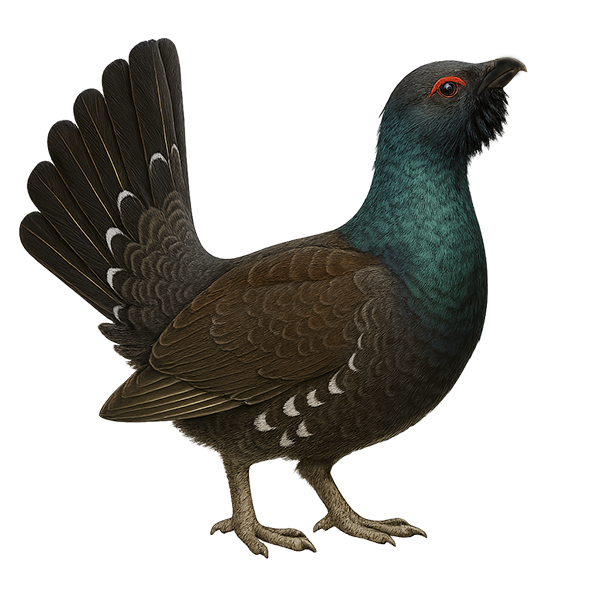Your wildlife photography guide.
Explore the black-billed capercaillie in detail, study its behavior, prepare your shots.
Where to observe and photograph the black-billed capercaillie in the wild
Learn where and when to spot the black-billed capercaillie in the wild, how to identify the species based on distinctive features, and what natural environments it inhabits. The WildlifePhotographer app offers tailored photography tips that reflect the black-billed capercaillie’s behavior, helping you capture better wildlife images. Explore the full species profile for key information including description, habitat, active periods, and approach techniques.
Black-billed Capercaillie
Scientific name: Tetrao urogalloides

IUCN Status: Near Threatened
Family: PHASIANIDAE
Group: Birds
Sensitivity to human approach: Shy
Minimum approach distance: 30 m
Courtship display: April to June
Incubation: 22-24 jours
Hatchings: May to July
Habitat:
Boreal forests, taiga, mountainous areas
Activity period :
Primarily active during the day, with peak activity in the morning and late afternoon.
Identification and description:
The Black-billed Capercaillie, or Tetrao urogalloides, is a striking bird from the Phasianidae family. It primarily inhabits the boreal forests of Siberia and the Russian Far East. This bird is recognizable by its dark plumage and impressive size, with males reaching up to 90 cm in length. Males display black plumage with metallic sheen, while females are more subdued with mottled brown feathers. The Black-billed Capercaillie is a sedentary bird that feeds mainly on buds, leaves, and berries. It is known for its spectacular courtship displays, where males spread their feathers and produce deep sounds to attract females.
Recommended lens:
400mm – adjust based on distance, desired framing (portrait or habitat), and approach conditions.
Photography tips:
To photograph the Black-billed Capercaillie, it is essential to maintain a safety distance of at least 30 m to avoid disturbing this shy bird. Use a telephoto lens of 400 mm or more to capture detailed images without getting too close. The best photography opportunities often occur early in the morning when the bird is most active. Be patient and discreet, wearing neutral-colored clothing to blend into the environment.
The WildlifePhotographer App is coming soon!
Be the first to explore the best nature spots, track rutting seasons, log your observations, and observe more wildlife.
Already 1 430 wildlife lovers subscribed worldwide

